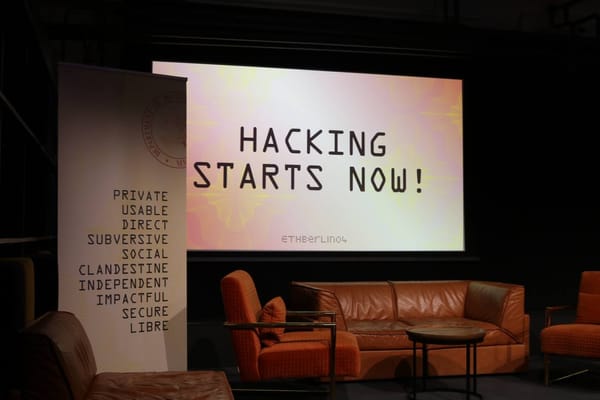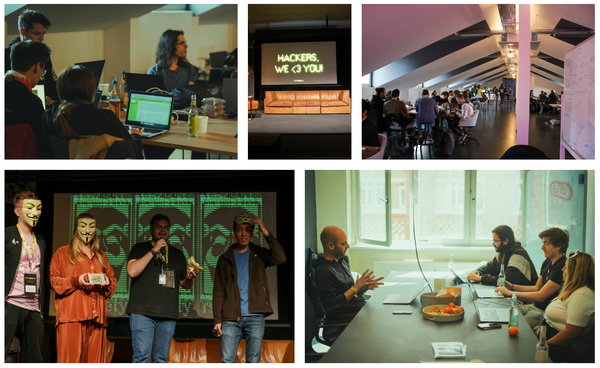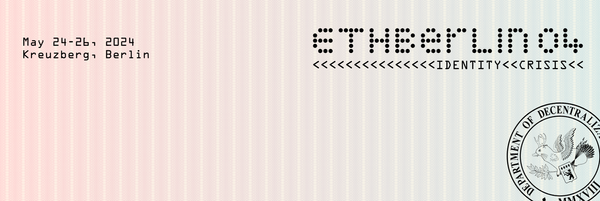A Conversation with Curator Lindsay Howard, Foundation’s Head of Community
From the start, the Department of Decentralization (DoD) has been putting special emphasis on advocating for artists, and exploring…
María Paula Fernández interviews Lindsay Howard
From the start, the Department of Decentralization (DoD) has been putting special emphasis on advocating for artists, and exploring different ways to fund art using technology.
After the release of our first report, There is No Such Thing as Blockchain Art, we continued exploring this field by launching several exhibitions (Berlin and Osaka), and hosting discussions with artists and technologists. In April 2019, we started writing our second report: a new study on art, collaboration, crypto anarchism, and funding mechanisms. While conducting research for the new report, we came across several platforms that aim to use technology to empower creatives.
One of these platforms is Foundation. Foundation offers what (to us) seems like the most promising way to allow artists to monetize their work, while simultaneously building up a community around their practice. Foundation also features art markets that creators are able to custom-build and evolve based on their preferences, and on how their micro-communities evolve. This concept — which not only gives artists full control of their sales, but also full control over the way they choose to market their work — is both revolutionary and fascinating. To learn more, we spoke with Lindsay Howard, Foundation’s Head Of Community. Lindsay has an extensive art background, so she was able to shine a light on how Foundation will work for artists, in addition to how the platform will be built out over time.
When it comes to building out Foundation, what motivates you?
As a curator who’s worked with hundreds of digital artists, I’ve always been interested in how to bring monetary value to digital and net-based artworks in a way that feels authentic to the medium. I’ve worked on models focused on micropayments (Art Micro Patronage), crowdfunding (Kickstarter), and the traditional art market (Phillips Auction House and various art galleries), and explored each of their benefits and challenges.
I see Foundation as a way to combine some of the best features of these models, with the added potential of cryptocurrency. On Foundation, creators can drop limited-edition art and goods on a bonding curve using dynamic pricing, or they can release unique digital artworks as NFTs. With both of these approaches, creators are empowered to design their own markets in ways that suit their needs, and make royalties on it over time. That’s huge.
Additionally, there’s more going on here than the transactional aspect of selling art. We’re also focusing on collaboratively building a transformative creative economy that shifts power into the hands of creators. I’m excited about the technology we’re building to accomplish this and the creators who’ve jumped in to shape it in these early stages.
At Foundation, how are you working with artists to make sure their needs are being met? And how are you introducing them to crypto, if they’re not familiar with it yet?
Before I joined Foundation — before Foundation was even a company — our CEO, Kayvon Tehranain, met regularly with one of my favorite artists, Addie Wagenkencht, to talk about how crypto could be used to shape a better, more fair creative economy. Addie is a really interesting person because she’s a highly successful artist with work in the collections of The Whitney Museum and MoMA, and she’s also a cryptographer with a computer science degree who’s worked on technical documentation at Parity Tech. She and Kayvon had a lot of fascinating conversations (that I heard about secondhand, and which made me want to join the company, ultimately), and those early conversations are what helped the Foundation team develop the model into what it’s become over the last few months.
Since we launched in May, we’ve continued that collaborative ethos with artists, musicians, and designers. The creators who joined us early on pop into our Slack and Discord on a regular basis to share ideas, brainstorm, and riff on what we’re working on at the moment. I think it’s made Foundation a much more rich experience, because you can tell that it’s not one single person’s vision. It’s a team effort with our community and I’m really proud of that.
As far as artists who are new to crypto, I see it as my responsibility to be a good steward and connect them with the other artists, organizations, and collectives who are doing great work in the crypto space. I want them to have a clear understanding of the scene and landscape, so they can make their own decisions about how they want to present their work, who they want to partner with, and come up with their own takes on what’s happening here. A great example was when we partnered with she256 — an organization that aims to increase diversity and break down barriers to entry in the blockchain space — to host a conversation with our first artist on Foundation, Signe Pierce. They had such a great discussion about merging culture and crypto, and what it means for new artists to be entering this space. I want to do more programs and events where we bring different communities together like that, with the common goal of discussing what’s possible.
How have you shown the value of Foundation so far? How has it been going with artists?
Since we started collaborating with artists to drop their work on Foundation five months ago, we’ve all been learning so much in real-time. In August we announced that our artists broke $100K in trading volume, which isn’t just an important financial milestone — it also proves that this model is resonating, and delivering real return for artists. Overall, our artists have sold hundreds of tokens to collectors all over the world, many of whom are just getting into collecting because Foundation is making it accessible and exciting.
One thing that’s important to say is that we’re not trying to replace the traditional art market or crowdfunding or subscription-based models. All of these things can and should coexist together. As I see it, the more options that artists have available to them, the better. The more levers that they can pull to help them express their work creatively through distribution and monetization, the better. The more people out there who are interested in collecting their work, the better. We’re trying to offer something that brings all of this together in a way that we feel hasn’t been offered yet.
Curious to learn more about Foundation? Check out their website, subscribe to be notified when new artists drop on their platform, and follow them on Instagram and Twitter.




